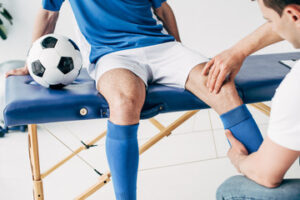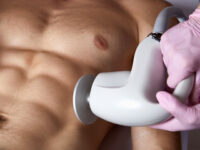Sports Massage – A Powerful Tool For Optimizing Performance and Preventing Injury
Sports Massage Tulsa are powerful tools for optimizing performance and preventing injury. This specialized massage triggers mechanical, reflex, and psychological responses that can significantly enhance an athlete’s training regimen.
Pre-event massage can warm muscles and sharpen focus, increasing agility, power, and speed. Post-event massage soothes tired tissues and flushes out toxins, alleviating Delayed Onset Muscle Soreness (DOMS). Regular restorative sessions during training can also boost muscle strength.
Athletes of all levels benefit from sports massage, whether it is used as a pre-event warm-up or as a post-event recovery technique. It enhances flexibility and range of motion, alleviates muscle imbalances and trigger points, and promotes the removal of metabolic waste like lactic acid. It also helps to reduce the occurrence of injuries, as well as optimizes athletic performance and prevents overtraining syndrome.
One of the primary benefits of sports massage is increased flexibility, which can lead to improved performance and less injuries. This is due to the increase in blood circulation that helps to elongate and stretch out the muscles. In addition, the pressure that is applied during a sports massage stimulates the release of elastin and collagen in the body, which help to increase the flexibility of the muscles.
Another physical effect of sports massage is the reduction in muscle stiffness and soreness. This is particularly true for athletes who are training or competing. The lactic acid that builds up during exercise is what causes soreness and stiffness, and sports massage helps to remove it from the body’s system to make the muscles feel more flexible.
Sports massage can be used in conjunction with other physical treatments, such as ice packs and heat to further assist in the relief of pain. However, it is important to discuss your specific medical and health history with a therapist prior to receiving a sports massage. There are certain conditions that may not be appropriate for the treatment, including high blood pressure, acute sprains and strains, deep vein thrombosis and varicose veins.
Besides the physical benefits, sports massage has a positive psychological impact. This is because it helps to regulate and interrupt the production of the stress hormones adrenaline and cortisol. It also stimulates the secretion of melatonin, which leads to deeper and more restful sleep. The result is a better quality of life and enhanced athletic performance.
It is essential that you have a qualified and experienced sports massage therapist to get the most out of your treatment. They will be able to adjust the techniques and intensity of the massage depending on your needs and fitness goals. They will also be able to provide advice on how to care for your muscles and joints after the treatment to enhance its effectiveness.
Reduced Soreness
The muscles of your body are a complex system that can be influenced in many ways. Regular sports massage can keep your muscles healthy and improve the way they move and function. It also promotes quicker recovery from workouts or competitions and reduces soreness afterwards.
The goal of sports massage is to alleviate muscle imbalances, release trigger points and help your body get rid of lactic acid, which contributes to post-exercise soreness. Many athletes, whether recreational or professional, use sports massage as part of their training and injury prevention routines.
Many studies show that the regular application of sports massage techniques helps to decrease delayed onset muscle soreness (DOMS), enhances flexibility, and increases range of motion and speed of recovery from athletic events. The best time to schedule a sports massage is the day after a long or hard workout, which can speed recovery and potentially prevent soreness.
This is because a sports massage can create heat in the muscles and tissues through the fiction of the hands moving over them. This increased temperature can break down adhesions and reduce muscle tension as well as increase the elasticity of the tissue and muscles. The increased elasticity allows the muscles to contract and stretch more efficiently and makes them less prone to strains or sprains.
Another physiological effect from sports massage is an increase in circulation. This is due to the breaking down of adhesions in the muscle tissue which enables the muscles to receive more oxygen-carrying blood. This in turn results in the removal of harmful toxins and improves performance, muscle function, and speed of recovery from injuries.
One of the few studies on sports massage and athletic performance found that after a massage, athletes performed better on a subsequent test or hard effort than they did on an earlier test without a massage. The study had 18 male cyclists do two 5K time trials 20 minutes apart, cycling at a hard effort the first time and then either receiving a sports massage or just lying down. The results showed that the cyclists who received a massage performed better on the second time trial than those who didn’t receive a massage.
Increased Blood Circulation
Many athletes find that a sports massage, in addition to reducing muscle soreness, can increase flexibility and improve recovery time. This is largely due to the increased circulation that comes with sports massage. When the muscles and soft tissues are relaxed during a massage, blood flow is increased to the area and waste products such as lactic acid are removed.
This improved circulation is the key to faster healing and improving performance. It also helps to reduce the likelihood of injury, especially when done in conjunction with other recovery practices such as ice and heat, stretching and movement patterns like muscle energy technique.
The most significant physiological effect that comes from a sports massage is the increase in venous return. This is the rate at which the blood flows from a specific area back to the heart. This is increased during a sports massage through stroking techniques such as effleurage (sliding), frictions, and petrissage. These techniques are used to break up muscular knots, stretch out fascia and tissue and encourage the body to relax and release the tense, shortened muscles that contribute to soreness.
Other effects include a reduction in delayed onset muscle soreness (or DOMS). Muscle soreness occurs when the demand for oxygen exceeds the supply and glycolysis, the process that breaks down glucose for energy, is activated. This produces lactic acid, which the liver eventually removes, but the lactic acid can accumulate to cause soreness in the following days.
Lastly, studies on sports massage have shown that it can significantly improve sprint and endurance performance. These benefits come from the improved blood flow that a massage provides, and also from the release of endorphins that boost the confidence and ability of an athlete.
In addition to these physical benefits, a sports massage can have huge psychological impacts for an athlete. The calming effect of the massage and the release of endorphins can reduce anxiety and promote relaxation, which can help an athlete perform at their peak. The combination of these effects means that a sports massage can be the perfect way for an athlete to prepare for their event and then recover afterward, allowing them to get back to training sooner and perform at their best next time!
Reduced Stress
One of the most significant effects of sports massage is its ability to reduce stress and anxiety. This effect comes from both the physical and psychological responses that follow a massage session. A well-executed massage alleviates tension and improves moods, thus allowing athletes to perform at a higher level mentally.
This mental boost in performance is caused by the triggering of the parasympathetic nervous system within the body. This system triggers the ‘rest and digest’ response in the body, which decreases cortisol levels and increases the production of neurotransmitters like serotonin and dopamine. These neurotransmitters boost moods and improve cognitive function.
Another way in which the psychological effects of a sports massage come about is through the increased circulation of the lymphatic system. This system acts as the body’s immune system, protecting it by filtering toxins from the tissues. During a sports massage, the kneading action of the hands triggers the release of pressure from the underlying vessels, which accelerates the flow of lymph through them. This allows for the removal of toxins and the delivery of nutrients to the tissues, which is crucial for healing.
All of this helps to reduce the buildup of lactic acid within the muscles, which can lead to muscle soreness. It also prevents the body from storing too much glycogen, which can cause fatigue. As a result, the muscle tissue is able to recover quicker from exercise and sports activities.
A common practice among athletes is to have a pre-event or pre-game massage about 15-45 minutes before competing. This can help to warm up the muscles, increase focus and confidence, and eliminate lactic acid buildup. It can also improve range of motion and flexibility.
The physical and psychological benefits of a sports massage are a big benefit for athletes in both professional and amateur athletics. However, it is important for all clients to reveal any pre-existing health conditions to their therapist in order to ensure that the massage is safe for them. Clients that are undergoing cancer treatment, for example, should wait until after their therapy is finished to have a sports massage.






